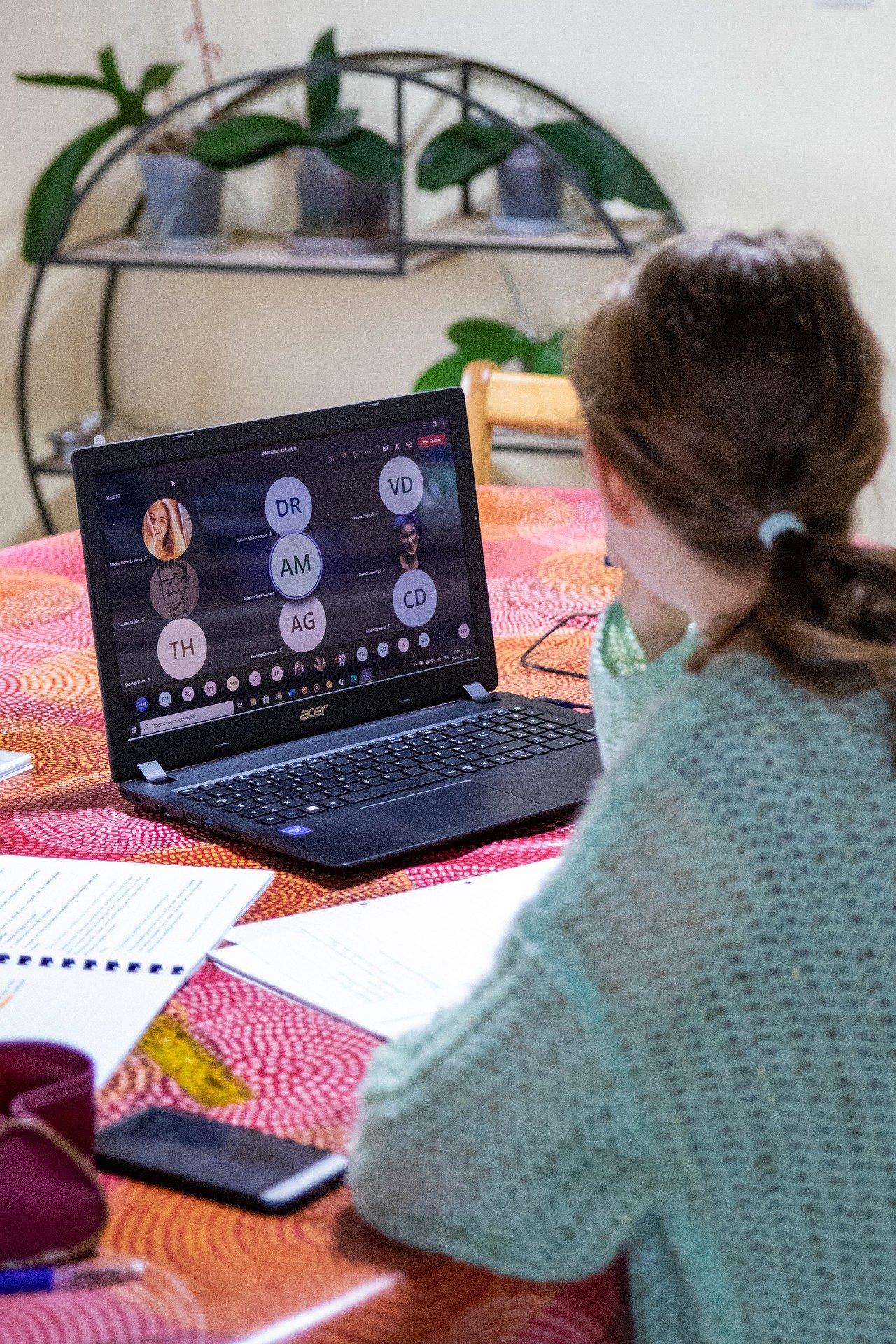Telework ¿ Ready to continue and succeed ?

I present to you a different look at a very present topic in our lives, telework.
Teleworking originated in 1973, in order to reduce or eliminate the displacement of personnel from their homes to the workplace, using computer and information techniques to carry out their activities, giving rise to what is known as working from home.
In these forty years has been consolidated, the International Labor Organization (ILO) and the World Health Organization (WHO), recognized the importance and its basic requirements in the Manual of Telework, which has been complemented by the so-called “White Papers of Telework”, developed in different countries.
The crest of the Telework wave
In the 21st century, 2020 represented the biggest growth of telework, because of the Covid-19 pandemic.
An unprecedented event that boosted telework intensively and globally, in a drastic and necessary way: all activities that could be performed from home would use the telework modality.
The surprising confinement and the partial or total suspension of activities demanded to assume the telework as the only option to comply with the physical distance and to diminish the risk of contagion, with the purpose of maintaining the operative continuity as far as possible.

It was assumed mainly as workplace the home of the worker, who abruptly had to assume the responsibility to perform their duties remotely, with or without the skills and experience to do so, as well as coping with the use of resources and working conditions available at home.
The process of adaptation and learning to telework in such conditions of haste was very varied, stronger and more intense for those who did not know telework and did not have the necessary resources, easier and more manageable for those who had previous references and had access to the means and resources.
Socio-economic inequalities increased, affecting the development of remote activities, as well as access to work, for those who could and those who did not have the means to do so.
When teleworking is a personal choice, there are characteristics of the teleworker that are generally present to achieve success, including commitment, having the necessary resources and means, obtaining results, ability to make decisions, organize and coordinate work, time management, and communication, ability to balance family and work roles, among others.
In the case of the Covid-19 pandemic, workers had no choice and had to orient their skills and competencies to telework, working with what they had at their disposal to the best of their ability and in the shortest time possible to fulfill their duties.

Telework and Resilience
During the Covid 19 pandemic, it is necessary to highlight that the conditions for teleworking are atypical, since the work was taken to the home without previous preparation, and in confinement time, in which the permanence of all family members coincides with the working day, as well as the congestion of available resources because most of the activities (education, shopping, payment of services, contact with relatives) are performed virtually.
This situation usually causes intense and unlimited working hours at night, use of non-ergonomic furniture, inadequate working spaces, incorrect postural habits, poor lighting conditions, which lead to physical and mental exhaustion that affects them and their families, potentially becoming a source of withdrawal, emotional instability, and conflicts.
The digital divide in Latin American and underdeveloped countries adds other limitations such as internet access, connectivity, electricity services, and payment of service fees, being teleworking a maximum exaltation to resilience.
Telework and the new reality
Teleworking is here to stay for a long and indefinite period of time, it is part of the new normality, for this reason it is necessary to consider the basic conditions to develop it in a prolonged and productive way. It is a job that requires attitudes and skills to achieve success, so it is necessary not to underestimate their requirements and the characteristics of the period we are living.
To avoid negative consequences, physical or psychological, it is essential to organize to perform the work, set goals and agreements with the employer, manage time efficiently, balance and set limits between work and personal life, as well as take care of the ideal conditions of the workplace.
Let's make teleworking our ally, it is part of our life.
Let's move forward with enthusiasm, care, and perseverance, improving every day!


Bibliographic Sources
OIT (2011). Manual de buenas prácticas en teletrabajo. 1ra. edición. Buenos Aires : Oficina Internacional del Trabajo
See you soon dear ProjectHope friends!

Congratulations @raizayanez! You have completed the following achievement on the Hive blockchain and have been rewarded with new badge(s) :
Your next target is to reach 3000 upvotes.
You can view your badges on your board and compare yourself to others in the Ranking
If you no longer want to receive notifications, reply to this comment with the word
STOPCheck out the last post from @hivebuzz:
This post has been manually curated by @bala41288 from Indiaunited community. Join us on our Discord Server.
Do you know that you can earn a passive income by delegating to @indiaunited. We share 80 % of the curation rewards with the delegators.
Here are some handy links for delegations: 100HP, 250HP, 500HP, 1000HP.
Read our latest announcement post to get more information.
Please contribute to the community by upvoting this comment and posts made by @indiaunited.
Hello ProjectHope friends
You can also view and share the post on Twitter
https://twitter.com/RaizaYanez8/status/1360586592147103747?s=09
resilience is one of my favorite terms, because it describes well the emotional state that we must have to face the challenges on the other hand telework grew exponentially and from my point of view this system of work came to stay and grow more and more over
Hello @trabajosdelsiglo.
That's right my friend, teleworking overflowed in 2020 and is here to stay.
Resilience helps us to cope better with the spirit to continue.
Thanks for your comment.
Happy and prosperous day
Ciertamente toda esta situación nos llevó a otras formas de desempeñar nuestras funciones. En muchos casos ha sido un gran quiebre porque hay estructuras que se niegan a avanzar hacia está forma de teletrabajo, pero como todas grandes transformaciones supongo que se requiere de mucha paciencia y progresividad.
Muy bueno tu post. Saludos 🤗
Hola @miriannalis.
Comparto tu opinión, el teletrabajo es un punto de inflexión en la modalidad de trabajo tradicional.
Lamentablemente, todavía hay dificultades y obstáculos por superar.
Gracias por tu comentario.
Saludos
Hello friend, today this is a great topic, many of us handle it, I am currently working from home, I think it is an excellent option, we can also be more secure and not necessarily depend on a floor and a boss, we can be our own bosses, for me the best thing is to be independent people, also learn to manage our time. Greetings!
Hello friend @franyeligonzalez, I share your opinion, teleworking is a good option for independent, organized people who manage time well.
Success in the activities you do!
Regards